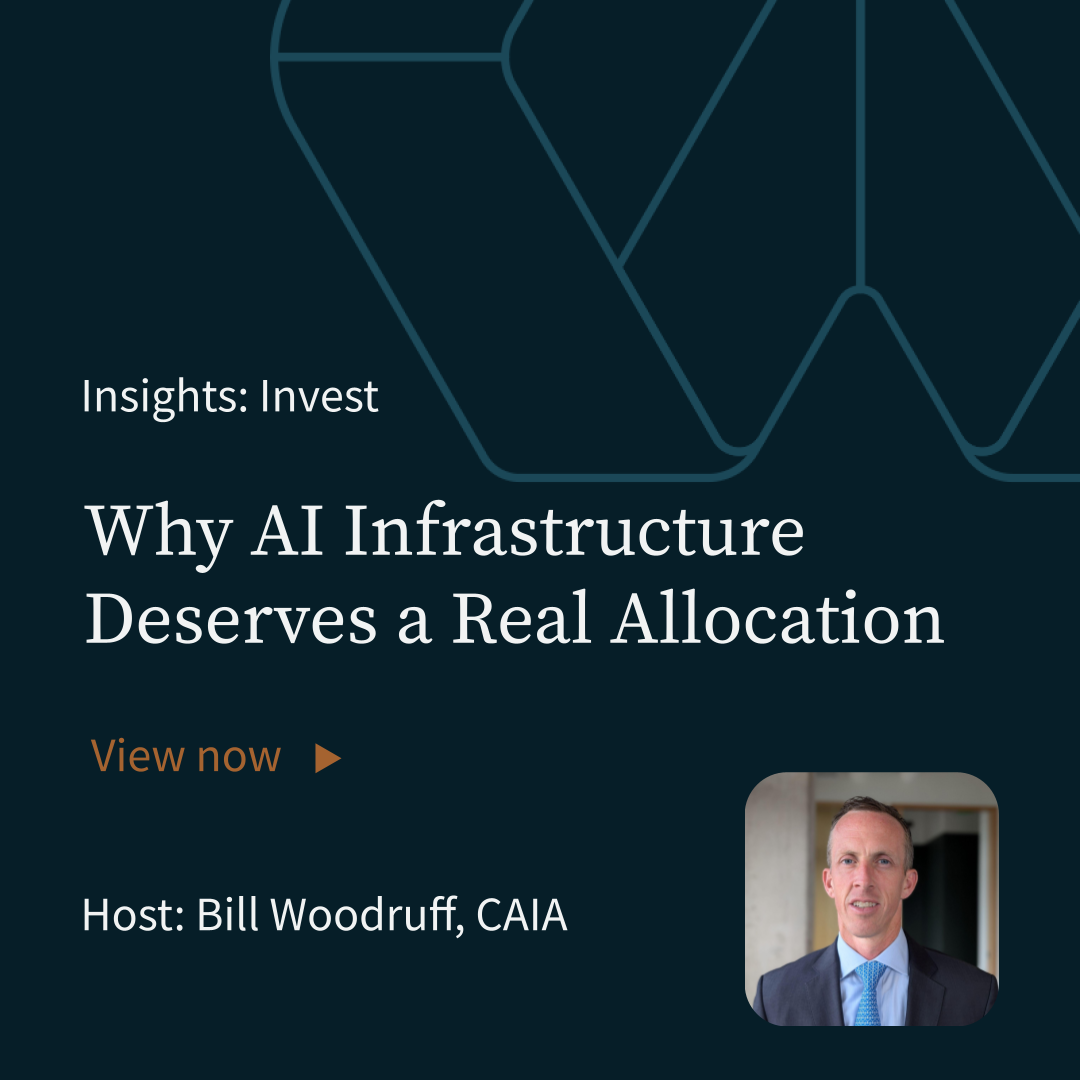From Hype to Hardware: Why AI Infrastructure Deserves a Real Allocation
In recent years, the rise of narrative-driven investing has led many portfolios astray. Two categories stand out as particularly emblematic of this shift: cryptocurrencies (especially Bitcoin and its peers), and publicly traded AI-related companies trading at extreme valuations. These assets have captured investor attention — and allocation — driven by powerful stories amplified through media, social platforms, and speculative momentum.
But beneath the surface, the structural risk/reward dynamics are often misaligned. While investors may feel like they’re participating in the “next big thing,” they may, in fact, be taking on asymmetric risk with diminishing forward-looking return potential. The issue isn’t ownership — it’s concentration. These positions can have a place in a well-diversified portfolio, but allowing them to dominate allocations poses a serious risk to long-term outcomes.
Hype Assets and the Illusion of Opportunity
Cryptocurrencies, led by Bitcoin, represent a clear example of hype-driven investing. Valuations in this space are not grounded in fundamental cash flow generation, nor are they underpinned by ownership in productive enterprises. Instead, they depend on belief systems, regulatory ambiguity, and speculative momentum.
Despite being a decade into their existence, cryptocurrencies have yet to evolve into stable stores of value, functional currencies, or scalable financial infrastructure. What they have become is a high-beta proxy for sentiment — one that tends to suffer dramatically in risk-off environments and is exceedingly difficult to value or forecast.
AI-related equities, on the other hand, often do have real businesses behind them. But in many cases, they are now trading at valuations that imply dominance not just of their niche, but of entire future industries — priced for outcomes that are both uncertain and likely far in the future.
These companies have benefitted from AI becoming the dominant investment theme of the current cycle. But thematic concentration combined with extreme valuation premiums has historically led to poor long-term performance. We’ve seen this story before — in the dot-com bubble and other speculative periods — where narrative and capital flows outpaced fundamental reality.
The Structural Problem: Risk Without Corresponding Reward
What unites both cryptocurrencies and overpriced AI stocks is a structural imbalance: a significant downside risk profile without an appropriate reward offset. Once an asset becomes widely owned based on narrative — rather than fundamentals like cash flow or capital return — it shifts from being an investment to being a momentum trade.
Bitcoin’s historical returns have resembled a successful venture capital outcome — explosive growth from early adoption, driven more by belief than intrinsic value. But just as with venture-backed companies, those returns are concentrated among early entrants. The forward path looks very different.
As crypto adoption has broadened and institutional capital has entered, its return profile is beginning to look less like venture and more like gold — an asset with no yield, no cash flows, and, over the long term, dramatic underperformance versus equities. From 1980 to today, gold has returned a fraction of what the S&P 500 has delivered, despite periods of popularity during crises.
Even for investors currently sitting on gains, the forward-looking case for hype-driven assets is now skewed. As crowding increases and upside compresses, the smart move is not to press the bet — it’s to reposition before the asymmetry turns painful.
The Case for AI Infrastructure
This doesn’t mean avoiding AI — quite the opposite. AI is poised to transform industries across the economy, but history tells us that the biggest long-term winners aren’t usually the most visible names. They’re the ones powering the ecosystem behind the scenes.
AI infrastructure — the physical and digital backbone of this transformation — presents a structurally superior investment profile. It combines the stability of infrastructure-like risk characteristics with the upside potential more commonly found in private equity or strategic buyouts. This includes areas such as computing, data networks, storage, and the foundational software layers that make large-scale AI deployment possible.
These businesses tend to offer real revenue, tangible margins, and more predictable growth, and they haven’t been caught up in the same speculative surge as front-line AI stocks. That creates an attractive entry point for long-term investors.
Unlike narrative-driven trades, AI infrastructure aligns with durable investment principles: capital appreciation rooted in productivity, defensible market position, and resilience across economic cycles.
Why Now: Take Advantage of Highs to Rebalance
The current environment — with cryptocurrencies near recent highs and AI stocks at aggressive multiples — presents a timely opportunity for thoughtful repositioning. For investors sitting on gains, it’s a moment to ask: Does this position reflect my long-term goals, or am I just riding the wave?
Rebalancing now isn’t about timing the top. It’s about making use of elevated prices to reduce exposure to hype-driven assets and build or strengthen positions in parts of the market with more sustainable return potential.
This is the kind of disciplined portfolio management that separates outcomes over time. At WealthFactor, we advocate for structurally sound allocations rooted in evidence, not emotion — and this environment is precisely when that matters most.


-2.png)

%20(1)-Jul-09-2025-09-00-53-3771-PM.png)




